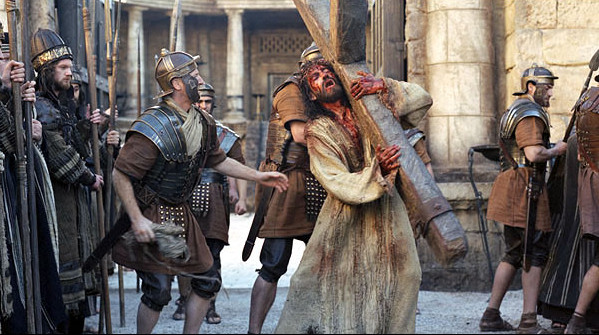(1).jpg)
WHO BETRAYED PROPHET ISA (JESUS)?
Among the disciples, Judas is known as the one who betrayed the Prophet Isa (Jesus). The entire Christian faith is built upon this. But is that really the truth? Was Judas a traitor? Or was he a hero who sacrificed himself?
When the Prophet Isa began his divine mission in Palestine, it was not the pagan Romans but the Jews—who had a monotheistic religion—who opposed him. Although the Jews were awaiting a savior prophet, the gracious and merciful Isa did not resemble the stern deliverer they were expecting.

The Last Supper
The Prophet Isa was a rabbi descended from the Prophet Dawud (David). He opposed the Jews’ distancing themselves from the law of the Prophet Musa (Moses). His act of dispersing those practicing usury in Bayt al-Maqdis (Masjid al-Aqsa), despite it being forbidden, was the last straw. They reported him to the Roman governor of Palestine, Pontius Pilate. The governor, a mature and intellectual man, met the Prophet Isa and, realizing that he was not as he was accused of being, did not take the complaint seriously. Upon this, the Jews devised a plan: to alarm the governor, they accused the Prophet Isa of claiming to be “the King of the Jews” and had him condemned. This was a political crime. The Jews had their own courts for trying their people, but these had no authority to carry out executions. Fearing public reaction and a possible negative impression before Rome, the governor permitted the Prophet Isa to be punished. The soldiers of the high priest Caiaphas came to arrest the Prophet Isa. Up to this point, there is no disagreement in historical accounts.

.jpg)
The Christian belief holds that while the Prophet Isa was dining with his twelve apostles, he foretold that one among them would betray him. This Last Supper is very famous; the ritual of communion (mass, Eucharist) with bread and wine commemorates it. After the meal, Judas Iscariot—one of the apostles and part of the Prophet Isa’s closest circle of twelve—delivered the Prophet Isa to the Jews in exchange for thirty silver coins. The Prophet Isa was arrested at the foot of the Mount of Olives, in the Garden of Gethsemane near his mother’s house, where olive trees still stand today. He was imprisoned for one night in a cave that still exists in the city. Then he was taken through the streets known as Via Dolorosa (the Way of Sorrows) carrying his cross to Golgotha Hill. The fourteen points along this path—where he is said to have stumbled, leaned on his hand, or met his mother’s gaze—are now regarded as holy stations. Christians walk this route carrying symbolic crosses, performing a pilgrimage ritual according to their faith. The Prophet Isa was crucified on this hill. He died there. Meanwhile, Judas regretted his actions, returned the money, and hanged himself on a tree. The priests, considering this money “evil,” decided to use it to buy a cemetery. A few believing women saw from a distance someone resembling the Prophet Isa dying on the cross and informed the apostles. The apostles saw the Prophet Isa alive three days later, and then he ascended to the heavens.
Such is the Christian version of the event. But what happened afterward? It is likely that, at that point, the Jews realized their mistake and opened the tomb. When they saw that the body there was not Isa, they burned it. When the apostles came to the tomb and found it empty, they thought, “the Prophet Isa was crucified, then buried, then resurrected and ascended to heaven.” The figure of Judas was inserted into the story later. The place where the Prophet Isa was believed to have been crucified, buried, ascended to heaven, and where he is expected to return on Judgment Day was later made the site of a church by Saint Helena, mother of Roman Emperor Constantine. Today, this place is called the Church of the Holy Sepulchre or the Church of the Resurrection and is administered by clergy from various Christian denominations.

Who Made the Sacrifice?
The Holy Qur’an states that the Prophet Isa was neither crucified nor killed, and that people were made to fall into confusion over this matter. According to some reports, people thought they saw him crucified, but in reality, no such thing occurred—or someone else was crucified in his place. This person may have been a criminal deserving of crucifixion. Scholars such as Wahb ibn Munabbih and Ibn Ishaq from the early periods say that the Prophet Isa died for a short time before being raised to the heavens, but the correct view is that the Prophet Isa never died. Islamic histories contain interesting accounts regarding who gave the information that led to his arrest. Most Islamic historians and exegetes had to rely on and record later Christian reports.

The great Islamic exegete and historian al-Tabari narrates from Wahb ibn Munabbih, a Tabi‘in scholar known for reports from Isra’iliyyat (Jewish sources), that the informant was one of the disciples—but he does not mention a name. The Companion Abdullah ibn Abbas said: when the Jewish ruler’s man, Pontius Platus, entered the place where the Prophet Isa was, the angels raised Isa to the heavens. Those who came afterward mistook Pontius Platus for the Prophet Isa and crucified him. The exegete al-Qurtubi, on the other hand, states that the informer Judas was not one of the disciples but an ordinary Jew, who was made to resemble the Prophet Isa and was crucified in his place. Judas was a common name at that time.
The Tabi‘in scholar and historian al-Dahhak has a remarkable narration. According to it, when the Jews raided the place where the Prophet Isa was, and the divine will to raise him to the heavens was revealed to him, the Prophet Isa asked: “Who will sacrifice himself for me tonight and be with me in Paradise?” Judas, who appears to have been the bravest of the apostles, stepped forward saying, “I will.” The Prophet Isa gave him his robe, turban, and staff. They crucified Judas, mistaking him for Isa. The Prophet Isa was raised to the heavens.


Murderer or Lion?
In the Gospel of Judas—found in Egypt in the 1970s and, after many adventures, revealed in 2006—the event is narrated differently from classical Christian theology. According to it, a friend to whom Judas had gone to seek help followed him, learned the Prophet Isa’s whereabouts, and informed the Jews. In response, Judas, believing himself responsible for the incident, sacrificed himself and was crucified.
So how did the Christian perception of Judas emerge? If Paul—known for reshaping Christianity into a new form—had known Judas, it could be said that he was the one who freely spread this information. Judas was probably a Jew who knew the Prophet Isa and betrayed his location. Later, this man was confused with the Apostle Judas. The entire Christian belief system was built upon this baseless story. Judas—and even the purple tree (Judas tree) on which he is said to have hanged himself—became symbols of evil. Judas came from a noble Jewish family. His intellectual nature is evident from the style and expression of the Gospel bearing his name. Iscariot comes from Latin sicarius (“murderer”); Hebrew aryeh (“lion”) or Ish Kerioth (“man from Kerioth”); and Aramaic roots meaning “red-colored” or “hanged man.” Kerioth was one of the cities of Palestine. It is likely that the different negative meanings of this word led to the later fabrication of this story.


The Unlucky 13
The belief that the number 13 is unlucky is a type of phobic superstition (triskaidekaphobia). Indeed, the moon becomes full 13 times a year. In Norse mythology, when Balder, the god of light and beauty, held a banquet with 12 invited guests, Loki—the god of lies and deceit—showed up uninvited as the 13th guest. A quarrel broke out, and Loki killed Balder. This myth was later applied to the Prophet Isa’s Last Supper: Isa took Balder’s place, and Judas took Loki’s. Because they believe the Prophet Isa was crucified and died 24 hours after this supper, it became a widespread belief among Christians that if 13 people gather for dinner, one of them will experience misfortune.
Önceki Yazılar
-
IT HAS BEEN MORE THAN 100 YEARS SINCE ITS ABOLITION, BUT... IS THE CALIPHATE BEING REESTABLISHED?19.11.2025
-
GREETINGS TO YOU, O OTTOMAN SANJAK!…12.11.2025
-
ROTHSCHILDS BROUGHT THE END OF THE OTTOMAN EMPIRE!5.11.2025
-
SHEIKH BEDREDDIN, SON OF THE QADI OF SIMAVNA29.10.2025
-
THE ROOTS OF THE ENGLISH POLITICIAN IN TURKEY – THE TRAGIC END OF ALI KEMAL BEY22.10.2025
-
WHERE IS THE RED APPLE?15.10.2025
-
THE ABBASIDS IN ANATOLIA1.10.2025
-
IMAMS AND MUFTIS AS OFFICERS IN THE OTTOMAN ARMY24.09.2025
-
SULTANS WOULD STAND UP FOR THE HEAD OF THE PROPHET'S LINEAGE17.09.2025
-
NO RETIREMENT BEFORE THE GRAVE10.09.2025